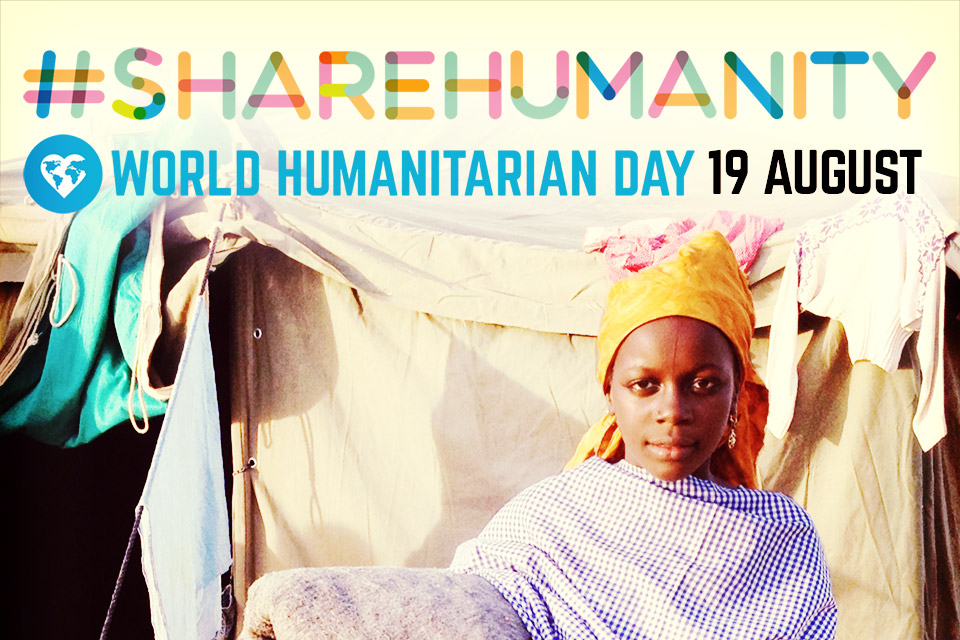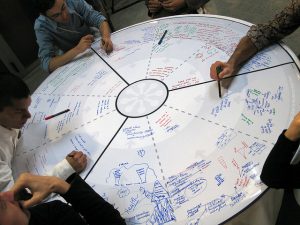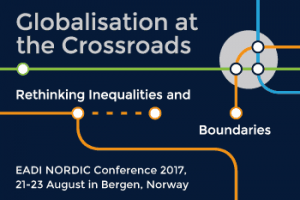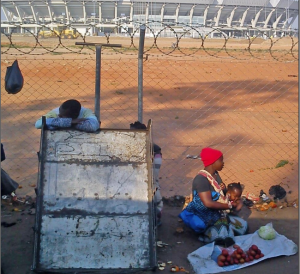World Humanitarian Day: The Power of Collaboration

Humanity. Neutrality. Impartiality. Independence. These are the major humanitarian principles defined by United Nations. On the occasion of World Humanitarian Day, celebrated annually on 19 August, we expand the list asking what innovation and technology can bring into the aid sector.
This year World Humanitarian Day was celebrated with an interactive conversation about innovation and social media in the humanitarian sector. Organized in the frame of the UN campaign #ShareHumanity and with support of +SocialGood, the full discussion is still available here. Meanwhile, we will outline key messages of the panel talk.
- Embracing the power. “5 billion people are connected to the global conversation, and Internet is its nerve center,” says a celebrated NASA astronaut and a dedicated humanitarian Ronald Garan. Global community needs to be united and collaborate to find solutions for challenges it faces. What is the easiest and fastest way to do it? Use social media. Brendan McDonald, UN aid worker, recalls how difficult it was to reach out using media in Kosovo in 1999 and how much more communication opportunities emerged during a crisis in Libya 12 years after.
- Sharing. Humanitarians managed to overcome geographical and cultural barriers, yet set other obstacles thus hindering relief missions. Being competitors for funding and attention, NGOs are reluctant to share data between themselves. Where does it lead to? To inefficiency whenever a rapid response and joint efforts are needed. Transparency is a big issue and here are 5 ways how to tackle it.
- Scaling up. Why to reinvent the wheel and not use the best ideas that are already out there? Instead of focusing on what is “new and shiny”, as Ronald Garan points out, aid workers should develop what has already proven to be efficient. Learn from the best and take that experience to your agency. Furthermore, learn from your daily business, advises Mahsa Jafari, Thematic Coordinator for Transformation through Innovation of the World Humanitarian Summit. Years of policy papers, discussions and trainings could bring to a start point. In business such underestimation of the opportunity cost is unacceptable. Return On Investment simply doesn’t justify. Yet according to Ronald Garan, “we will keep on reinventing the wheel as we don’t know that it already exists.”
- Involving. “People don’t want innovations brought from the outside – they want to develop things themselves,” says Mahsa Jafari about solutions imposed by aid workers. There could be great ideas, which will meet resistance from locals. Being able to sensitize people and involve them is still something humanitarians need to learn. Eventually it is “insights of those closest to to the problem that can drive innovation”, says Ronald Garan.
-
Speak to affected communities → listen carefully → make them a partof the innovation process - Reflecting. Sometimes the best way to be innovative is to step back and see what is actually going on and what can be changed. “Read, listen, study,” advises Brendan McDonald. Separating yourself from a challenge refreshes view and helps to see a problem from a new perspective. Also, many solutions are based on opinions whereas they should be based on evidence. Moreover, think over what might go wrong whenever a new solution emerges. Ronald Garan brings example of NASA where 90% of work is concentrated on predicting possible pitfalls and trying to figure out how to fix them. They might never happen. But it is always better to be ready.
Are you reflecting on data that you come across? Then join the global #VisualizeChange and become a part of the Global Consultation round of the World Humanitarian Summit in Geneva this October. The deadline is 30 August. Get to know more here.
Image via UN News Centre
 New PhD opportunities at the University of Leicester
New PhD opportunities at the University of Leicester Call for Abstracts: New Directions in Media, Communication and Sociology (NDiMS) Conference
Call for Abstracts: New Directions in Media, Communication and Sociology (NDiMS) Conference Ørecomm Team to Gather at the University of Coimbra
Ørecomm Team to Gather at the University of Coimbra “Communication and Social Change – A Citizen Perspective” Published
“Communication and Social Change – A Citizen Perspective” Published C4D Network to Sum Up Global Communication for Development Practice
C4D Network to Sum Up Global Communication for Development Practice Entering Media and Communication into Development Conferences?
Entering Media and Communication into Development Conferences? IAMCR Conference 2016: Communication for Development Highlights
IAMCR Conference 2016: Communication for Development Highlights Glocal Classroom Revisited – Storytelling & Social Change Leicester-Malmö
Glocal Classroom Revisited – Storytelling & Social Change Leicester-Malmö I EvalComDev International Conference: Call for Papers
I EvalComDev International Conference: Call for Papers Looking for Media and Communication in Development Conferences: Devres 2016
Looking for Media and Communication in Development Conferences: Devres 2016